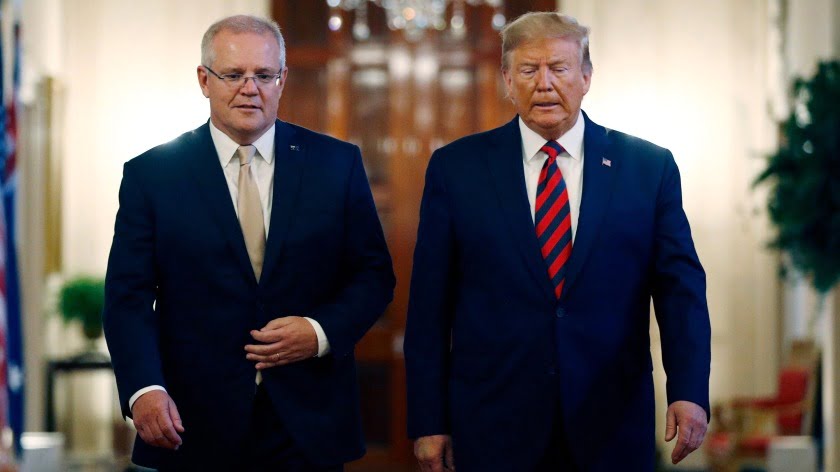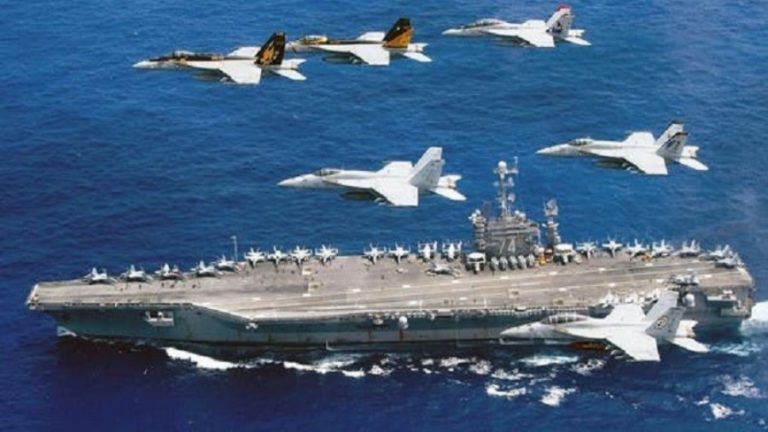The assassination of Mullah Akhtar Mansour: Washington plays with fire in Eurasia’s geopolitical tinderbox—Part 1
The summary execution of Mansour, which was carried out by no less than four US combat drones, has predictably derailed efforts to promote a peace dialogue between the Taliban and the US puppet government in Kabul.
Even more significantly, it has exacerbated regional tensions under conditions where the US’s strategic offensive against China has transformed South and Central Asia into a geopolitical tinderbox, easily comparable to the Balkan Peninsula during the years prior to the First World War.
It is especially ominous that Mansour, the political leader of the Taliban since 2014, was targeted in Pakistan’s southwestern Baluchistan province. The US had hitherto refrained from including Baluchistan in its AfPak drone-strike war as part of a secret understanding with the Pakistan government, whose close collaboration with the American military stretches back decades.
Mansour’s demise was met with noisy celebrations from the US establishment, including from US President Barack Obama, who praised the slaying as “a milestone” in US foreign policy.
The May 21 assassination signaled that the Obama administration is “no longer worried about blowing anything up,” ex-State Department official Vali Nasr told the New York Times.
As reported by the Times, the Obama administration authorized the strike against Mansour “weeks in advance,” giving US commanders a general mandate to surveil the Taliban leader and launch assassination strikes against him at their discretion.
It did so even as it publicly claimed to be leading a quadrilateral (US, Afghanistan, China, Pakistan) peace initiative aimed at drawing the Taliban into talks on ending its insurgency and reconstituting the Afghan government. Indeed, a meeting of “quad” representatives was held just days before the murder of Mansour, who reportedly favoured the Taliban taking up the offer of talks.
Like the intentional targeting by US Special Forces of the Kunduz Doctors’ Without Borders hospital, the strike on Mansour was launched above all to terrorize and intimidate US adversaries.
By showcasing their contempt for international law and their readiness to violate the “red lines” of a decades-old strategic partner, the US ruling class and its military machine are making clear that they will meet any challenge to American domination over Eurasia with unrestrained violence and mayhem.
Pressuring Pakistan to shed more blood
Aside from its function as a warning to Washington’s main global rivals, Mansour’s assassination represents a marked escalation in US efforts to bully Islamabad, which has already turned large parts of the Federally Administered Tribal Areas (FATA) into killing fields, to do more to eliminate Taliban “safe havens” in Pakistan.
The May 21 assassination was intended to apprise the Pakistani elite that maintenance of the alliance with Washington that has long served as a central bulwark of its rule is dependent upon it supporting, with both blood and treasure, the expansion of the war on both sides of the Pakistan-Afghanistan border.
US war planners are especially adamant that Pakistan go after the Haqqani Network, a mujahedeen militia that was heavily supported by the CIA and Pakistani intelligence during the 1980s as part of the US drive to ensnare the Soviet Union in war in Afghanistan and has emerged as an ally and leading force within the Taliban. The Haqqani Network has been responsible for some of the most devastating attacks on US forces and the Afghan government, including in Kabul.
Bruce Riedel, a former CIA official and current-day South Asia expert for the Brookings Institution and mouthpiece for the Democratic Party military-security brain-trust, called Mansour’s assassination “an unprecedented move to decapitate the Taliban leadership in its safe haven of Pakistan.”
The strike on Mansour “shows the U.S. is willing to disregard an ally [Pakistan],” Bloomberg noted in a widely syndicated analysis published June 1.
“Signals from both the executive branch and the Congress show that we’re finally getting to the point where we’re not going to accept the kind of discussions we’ve been having with the Pakistanis for the last four years,” said James Cunningham, a former US ambassador to Afghanistan.
The “signals” referred to by Cunningham include the recent Congress decision to scuttle a deal to sell Pakistan F-16 fighters by withdrawing hundreds of millions of dollars in promised financial aid.
The brutal message intended by Mansour’s killing has not been lost on Pakistani leaders, who already feel increasingly cornered by Washington’s burgeoning strategic alliance with its arch-rival India. In return for India integrating itself ever-more completely into the US’s anti-China “Pivot,” the US has lavished New Delhi with arms deals and programs to co-develop advanced weapon systems and supported it expanding its strategic influence in Afghanistan, becoming an Indian Ocean power and developing military-security ties in East Asia.
Due to popular opposition within Pakistan to the drone strikes, which have terrorized FATA’s population, the Pakistan government and military have feigned opposition. However, it is well known that Pakistani authorities have given them a greenlight.
The strike on Mansour was different, however. US officials have publicly boasted that Pakistan was not informed in advance and top Pakistani officials were clearly rattled by the US decision to kill Mansour and do so in Baluchistan, where much of the Taliban’s political leadership is known to reside.
The day after Mansour was incinerated, Pakistani Interior Minister Chaudhry Nisar Ali Khan denounced the US drone strike that killed him as “illegal, unjustified, unacceptable, against Pakistan’s independence and sovereignty, and completely against the UN Charter and international law.” He added it had “serious implications” for US-Pakistan relations.
On June 1, the head of the Pakistani military, General Raheel Sharif, condemned the strike and called for an end to further US drone operations on Pakistan’s territory.
In remarks from Rhode Island last week, US Defense Secretary Ashton Carter peddled the Obama administration’s line that the strike would force Taliban leaders to embrace negotiations. By demonstrating US willingness to carry the war into previously untouched areas of Pakistan, claimed Carter, the strike would convince the Taliban that “making peace with the government is their only alternative to certain defeat on the battlefield.”
Carter’s claims notwithstanding, the result of the attack has been to both intensify Taliban opposition and further exacerbate tensions between Kabul and Islamabad.
The Taliban have launched a fresh wave of attacks and chosen as Mansour’s replacement a more hardline leader, Mullah Haybattulah Akhundzada. According to General Charles Cleveland, who recently retired as head of the US Army’s Special Operations Command, Akhundzada is even less inclined than Mansour to participate in US-led negotiations. Cleveland’s comments came amid re-doubled attacks against the Kabul government. On Tuesday, Taliban fighters killed 10 civilians and kidnapped another 35 after ambushing and seizing hold of some 200 people traveling on a convoy of buses. Taliban ambushes have killed at least 50 Afghan national police officers during clashes in Helmand province this week.
Pakistan’s killing fields
Whenever the Pentagon has suffered significant reversals during the past 15 years of US war in Afghanistan, there has been a clamor from Washington for Pakistan to shed more Taliban blood. Invariably, these calls have been combined with suggestions from sections of the US military-security establishment that Pakistan’s military-intelligence apparatus is playing a double game, retaining ties to elements of the Taliban so as to ensure Islamabad has a significant say in any post-war government.
The reality is the US invasion and occupation of Afghanistan have been massively dependent on logistical support from Pakistan.
Moreover, in support of the US’s Afghan war, all sections of the venal Pakistani bourgeoisie, including the ostensibly “left” Pakistan People’s Party, have acquiesced to the US drone strike war in FATA and endorsed Pakistani military counterinsurgency operations that have devastated larger swathes of the country’s tribal regions. In the name of fighting terrorism, the Pakistani military has combined carpet-bombing with disappearances, extra-judicial killings and colonial-style collective punishments.
More than one million tribals have been internally displaced as a result of Islamabad’s operations in Waziristan alone. At the US’s urging, in June 2014 Pakistan’s military launched a new offensive in North Waziristan that began with three days of intensive bombing, then an order for the entire population to evacuate, with any who chose to remain being warned they would be considered terrorists.
Opposition to the Pakistan government’s support for the US invasion of Afghanistan and to its counterinsurgency operations in the traditionally autonomous FATA led by the middle of the last decade to the emergence of an indigenous Islamacist insurgency in FATA, loosely allied with the Taliban—the Pakistan Taliban.
While Washington complains about insufficient Pakistani support for the war it initiated in Afghanistan in 2001 with the aim of establishing a strategic beachhead in Central Asia, the truth is the war has caused untold social dislocation and suffering in Pakistan.
That said, there is some truth to the US claim that Pakistan’s military-security establishment maintains ties to sections of the Taliban. Those ties arise out of the central role that Pakistan played at the US’s behest in mobilizing Islamacist forces in the late 1970s and 1980s to wage war on the Soviet-backed government in Kabul.
With the US encouraging India to play a greater role in Afghanistan, including in training Afghan security forces, as part of its efforts to build up New Delhi as a strategic counterweight to China, Islamabad has been anxious to keep some “insurance” of future influence in Afghanistan.
Of course, US complaints about Pakistan playing a double-game with Islamicists are utterly hypocritical and cynical. US imperialism created the Taliban’s predecessors and courted the Taliban after it came to power in the late 1990s. Moreover, time and again, from Kosovo to Libya and Syria, Washington has used Islamacists as proxy forces in its regime change operations.
Explosive tensions between Kabul and Islamabad
There are already clear signs that the May 21 strike is exacerbating longstanding tensions between Kabul and Islamabad—tensions that have steadily intensified in recent years.
The assassination of Mansour has precipitated new moves to militarize the Durand line, already among the most dangerous border areas worldwide. This week, Pakistan tightened its border controls in frontier areas around Torkham, as part of plans for a string of military checkpoints stretching from Aranda, Chistral to Ghulam Khan, North Waziristan, according to Pakistan Today. In response, Afghanistan announced the closure of its diplomatic station in Peshawar, Pakistan.
The Afghan and Pakistani governments are trading war rhetoric and explosive accusations, with both sides denouncing the other for supporting insurgent forces on their respective sides of the border.
Afghan President Ashram Ghani declared earlier in May that Pakistan is waging “an undeclared war” in his country. Pakistan, for its part, has charged that Afghan secret services have provided support to the Pakistani Taliban. This charge was corroborated in a little-noticed New York Times report that said the Afghan stratagem had for a time been supported by elements within the US military-intelligence apparatus.
The immensely dangerous tensions between Kabul and Islamabad are ultimately the responsibility of imperialism. British colonialism divided the Pashtuns, imposing the Durand line that forms the current border between Afghanistan and Pakistan—a border Kabul has never recognized—and fomented communalism as part of a divide and rule strategy within British India, laying the basis for the partition of the subcontinent into a Muslim Pakistan and Hindu India.
During the Cold War, US imperialism aggressively promoted Pakistani involvement in Afghan affairs, as part of its predatory machinations against the Soviet Union, and encouraged Islamabad in pursuing its reactionary conflict with India, a Soviet ally.
In the halls of power in Washington, still bloodier interventions on both sides of the Afghan-Pakistan border are now in planning.
In a May 20 comment for the Wall Street Journal, “Take the Gloves Off Against the Taliban,” former CIA head David Petraeus and Brookings Institution senior fellow Michael O’Hanlon called for a massive expansion of the US air war in Afghanistan.
The US, they declared, should employ its “many dozens of combat aircraft at bases from Helmand and Kandahar provinces,” to wage a much larger bombing campaign against Afghanistan similar to those being waged against Iraq and Syria, where US forces have dropped more than 43,000 bombs since 2014.
“We continue to handcuff those deploying these jets, helicopters and unmanned aerial vehicles,” Petraeus and O’Hanlon wrote.
US control over Afghanistan is a lynchpin in Washington’s broader geopolitical and war strategy, the authors argued, noting, “Afghanistan is effectively the eastern bulwark in our broader Middle East fight.”
Even this blunt characterization does not go far enough. In reality, beyond its significance for US operations in the Middle East, Afghanistan is, from the Pentagon’s standpoint, the “western flank” of its strategic offensive against China and a key part of the “southern flank” of its offensive against Russia.
The Obama administration will likely soon embrace Pentagon demands for the cancellation of plans to reduce the number of US forces from its current level of 9,800, according to unnamed US officials. President Obama “remains open to recommendations from his military commanders” regarding a much larger, essentially permanent US presence, a White House official told the Wall Street Journal this week.
The 9,800 figure does not include the army of private contractors, Special Forces and commando “advisors” embedded within Afghan national units deployed alongside regular US forces, who continue to wage and organize war across Afghanistan on a daily basis. Barely one month after Obama proclaimed the official “end” of the Afghanistan war in December 2014, the US Army’s Seventh Infantry Division established new headquarters in the country. The opening months of 2016 have seen hundreds of infantrymen with the Army’s elite 10th Mountain Division sent to Helmand Province in support of disintegrating Afghan national units.
Between April 2015 and March 2016, combat operations organized by US “advisors” killed nearly 2,000 insurgents and wounded 730 more. More than 5,000 Afghan local forces have been killed in the past year while involved in US-led counterinsurgency operations.
For all this, the US-backed Afghan government can be saved only through a generalized escalation of American military and covert involvement.
Expressing a view that is widely shared in US ruling circles, leading US strategist Anthony Cordesman demanded “a review of US strategy and the size of the US military commitment” in Afghanistan in a recent report published by the Center for Strategic and International Studies.
Without such an overhaul of the US intervention, “the Afghan government is … going to lose critical parts of the country, if not the war,” Cordesman warned.







